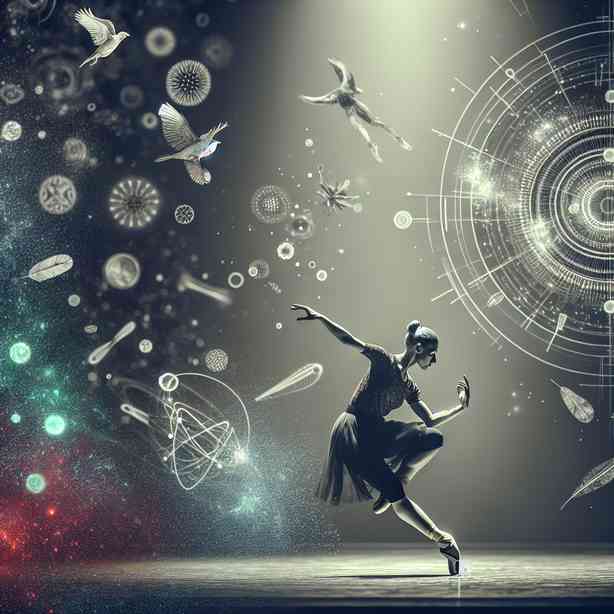
Floor work, particularly in the context of dance and physical movement practices, can often evoke a unique sensation that seems deeply connected to the force of gravity. This feeling is not merely a physical experience; it encompasses a range of emotional and psychological dimensions that can transform how we perceive our bodies, our movements, and our relationship with the earth beneath us. In this exploration, we will delve into the various aspects of floor work and uncover why it feels like gravity is speaking to us.
At the core of floor work is the interplay between body and gravity. When we engage in activities that bring us down to the floor, such as dance styles like breaking, contemporary dance, or even yoga, we are invited into a different dialogue with gravity. Unlike standing or jumping, floor work requires us to embrace the ground. This confrontation forces us to reconsider our physical presence, demanding an awareness of how our weight shifts and balances in relation to the earth.
This awareness can be enlightening. As we roll, slide, or transition through various movements on the floor, we learn to harness gravity to aid our motion rather than see it solely as a hindrance. Instead of resisting the pull of the earth, floor work teaches us to work with it. We shift our weight, utilizing the downward force to generate momentum for our movements, such as in a smooth roll or in transitioning from sitting to lying down. This negotiation between our bodies and gravity fosters a sense of freedom and fluidity, allowing our movements to evolve naturally and authentically.
Moreover, the experience of floor work can evoke a profound emotional response. Engaging with the ground beneath us can symbolize letting go, surrendering control, or connecting to the stability that the earth offers. In many practices, especially in contemporary dance, the act of falling or rolling on the floor can become a metaphor for vulnerability and trust. As one learns to embrace these moments, the feeling of gravity transforms; it becomes a companion, guiding us through the complexities and nuances of movement.
The physical sensation of floor work also prompts a deeper exploration of body awareness. When we’re on the floor, we engage with our bodies in ways that standing or jumping does not allow. The textures of the surface under our bodies, whether it is hardwood, carpet, or a dance mat, create unique tactile experiences that can heighten our perception of each action. Every movement becomes an invitation to explore our anatomy—how our joints articulate, how muscles engage and relax, and how our breath interacts with movement.
In this context, mindfulness becomes essential. Practicing floor work encourages us to be present in our bodies, aware of the subtle shifts that come with each transition. This mindfulness can extend beyond the dance studio; it offers valuable lessons in life about grounding ourselves in the moment and listening to our bodies. It teaches us to respond rather than react, encouraging a deeper understanding of our physical and mental states.
Additionally, floor work can serve as a powerful tool for building strength and stability. Contrary to the misconception that working on the ground is less demanding, floor work challenges multiple muscle groups and engages our core in profound ways. As we learn to lift our bodies, roll smoothly, or rise from the floor, we develop essential strength and control. Over time, this not only enhances our physical capabilities but also fosters a strong connection to our center, which can improve overall alignment and posture.
The feeling of gravity speaking to us through floor work is also influenced by the sense of community that often accompanies dance practices. When we participate in classes or workshops, sharing the floor with others creates a collective experience. Working alongside fellow dancers can inspire creativity, encourage exploration, and cultivate a sense of trust and support. This communal aspect further enriches our connection to the ground; we’re reminded that we are not alone in our journey, creating a supportive environment where we can explore movement without judgment.
As we reflect on the relationship between floor work and gravity, it is also essential to consider the impact of different environments on this experience. Practicing floor work outdoors, for instance, can heighten our awareness of the natural elements—the firmness of the earth, the coolness of grass, or the warmth of sunlight. Each setting offers distinct sensations and emotional responses that can influence how we engage with our bodies and movements.
Furthermore, the exploration of floor work across various cultures and movement styles reveals a rich tapestry of traditions that revere the act of grounding oneself. From the African dance forms that prioritize earth connection to the Japanese practice of butoh, which emphasizes an inward and reflective approach to movement, these diverse practices underscore the universal acknowledgment of gravity as a fundamental force in our lives.
In conclusion, the sensation of floor work feeling like gravity is indeed a multifaceted experience. It encompasses physical, emotional, and psychological layers that invite us to engage deeply with our bodies and the world around us. By embracing gravity as a partner rather than an adversary, we open ourselves to a profound exploration of movement, self-awareness, and connection. This journey is not just about falling and rising but about discovering balletic exchange between ourselves and the earth—a dance not only of the body but also of the spirit.
As practitioners of floor work, whether we are beginners or seasoned dancers, we can continue to cultivate this relationship with gravity, allowing it to inform our movements, deepen our emotional responses, and strengthen our community bonds. Every session on the floor becomes an opportunity to listen—to gravity, to our bodies, and to one another, ultimately enriching the dance of our lives.


